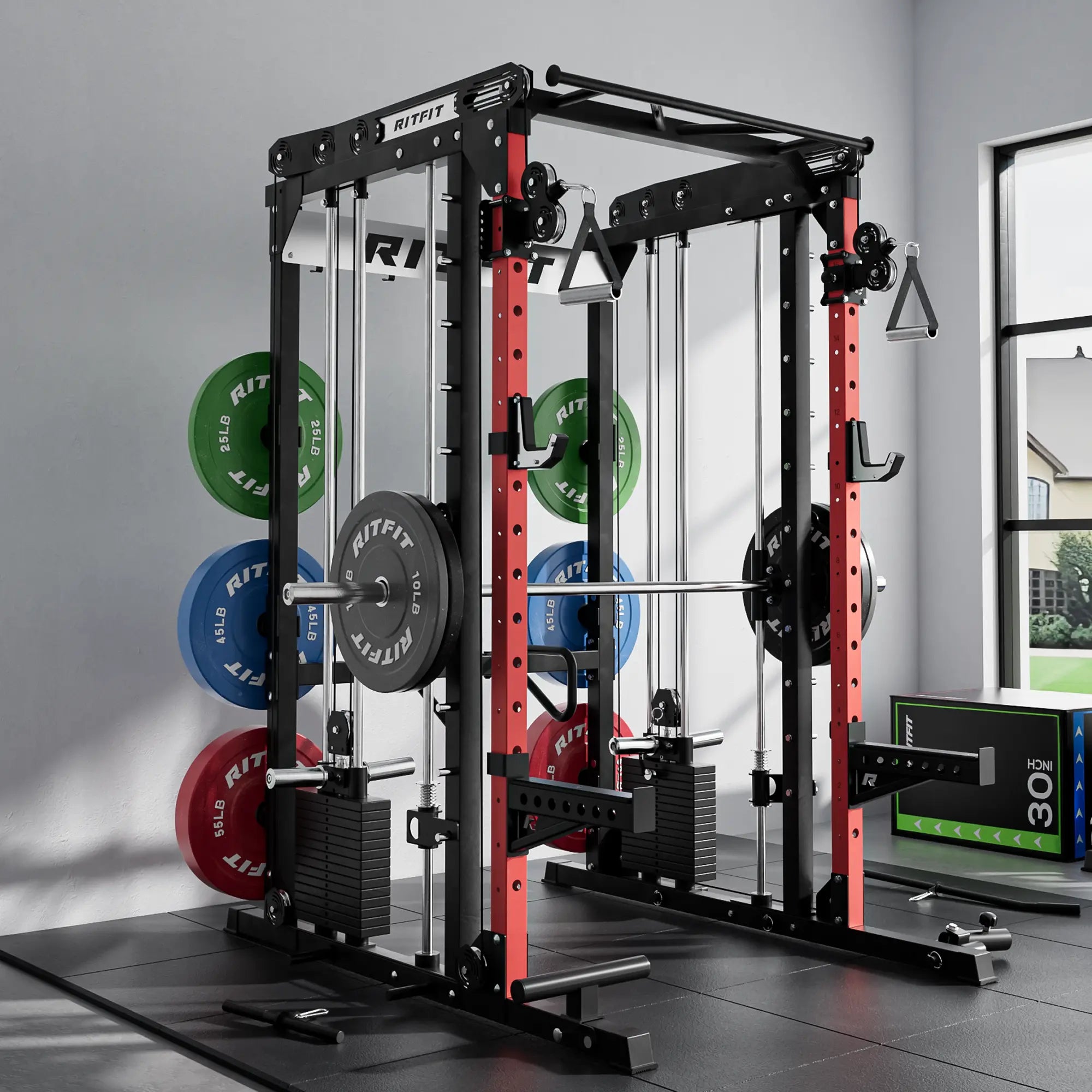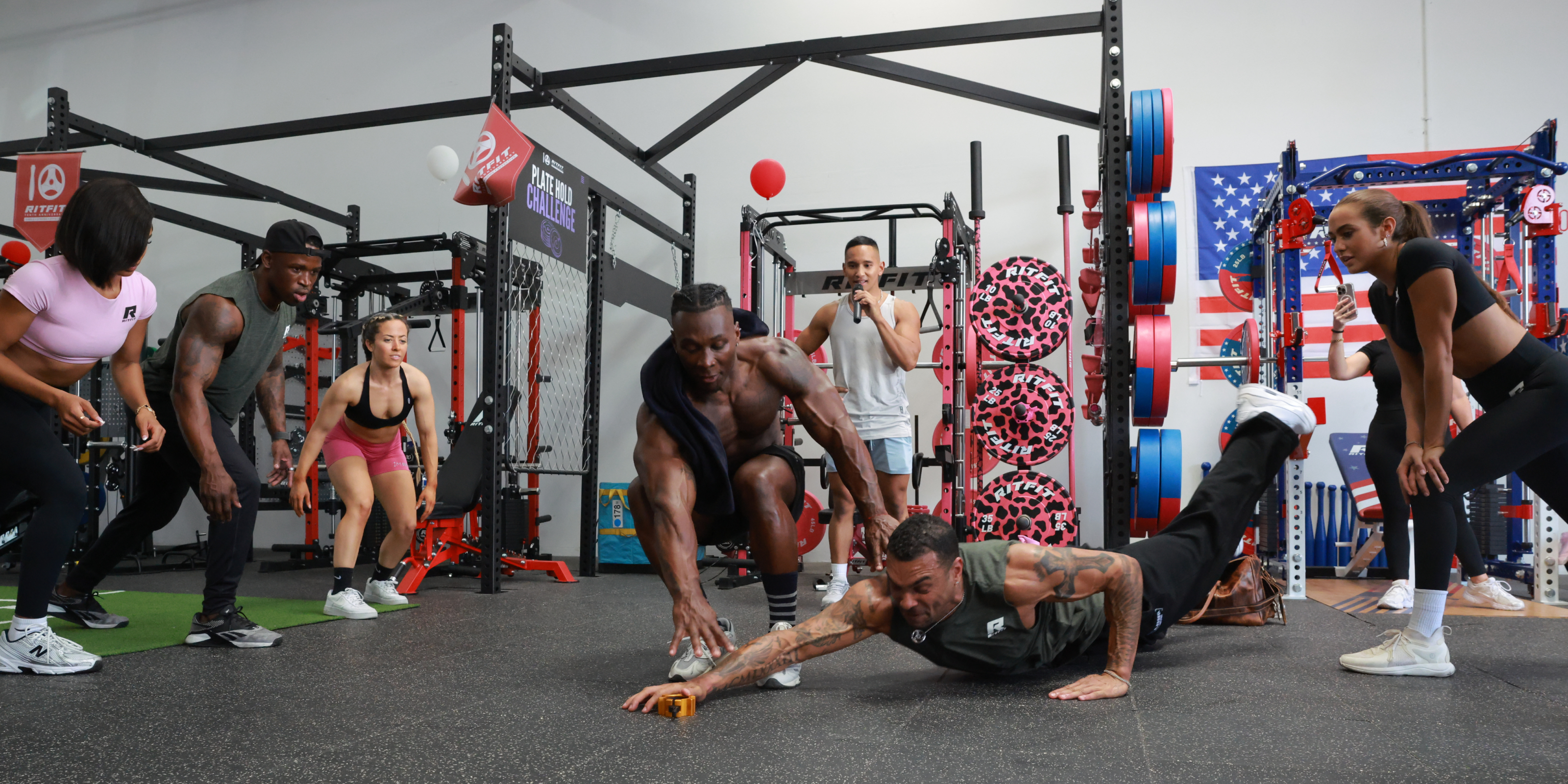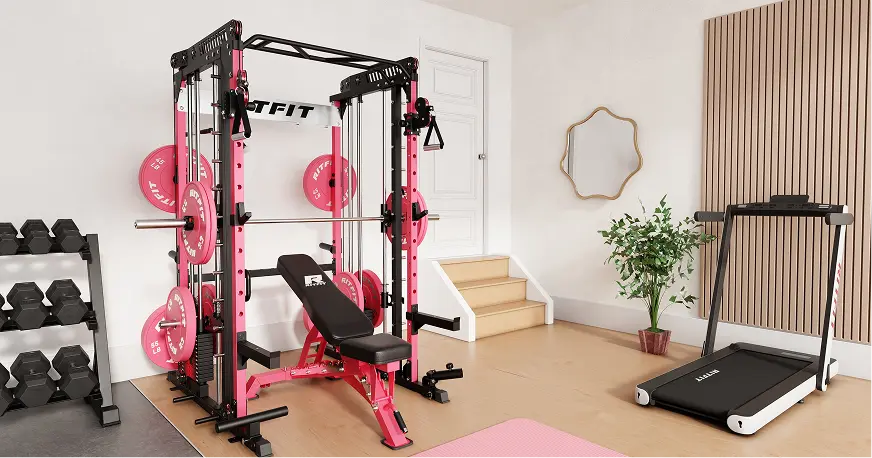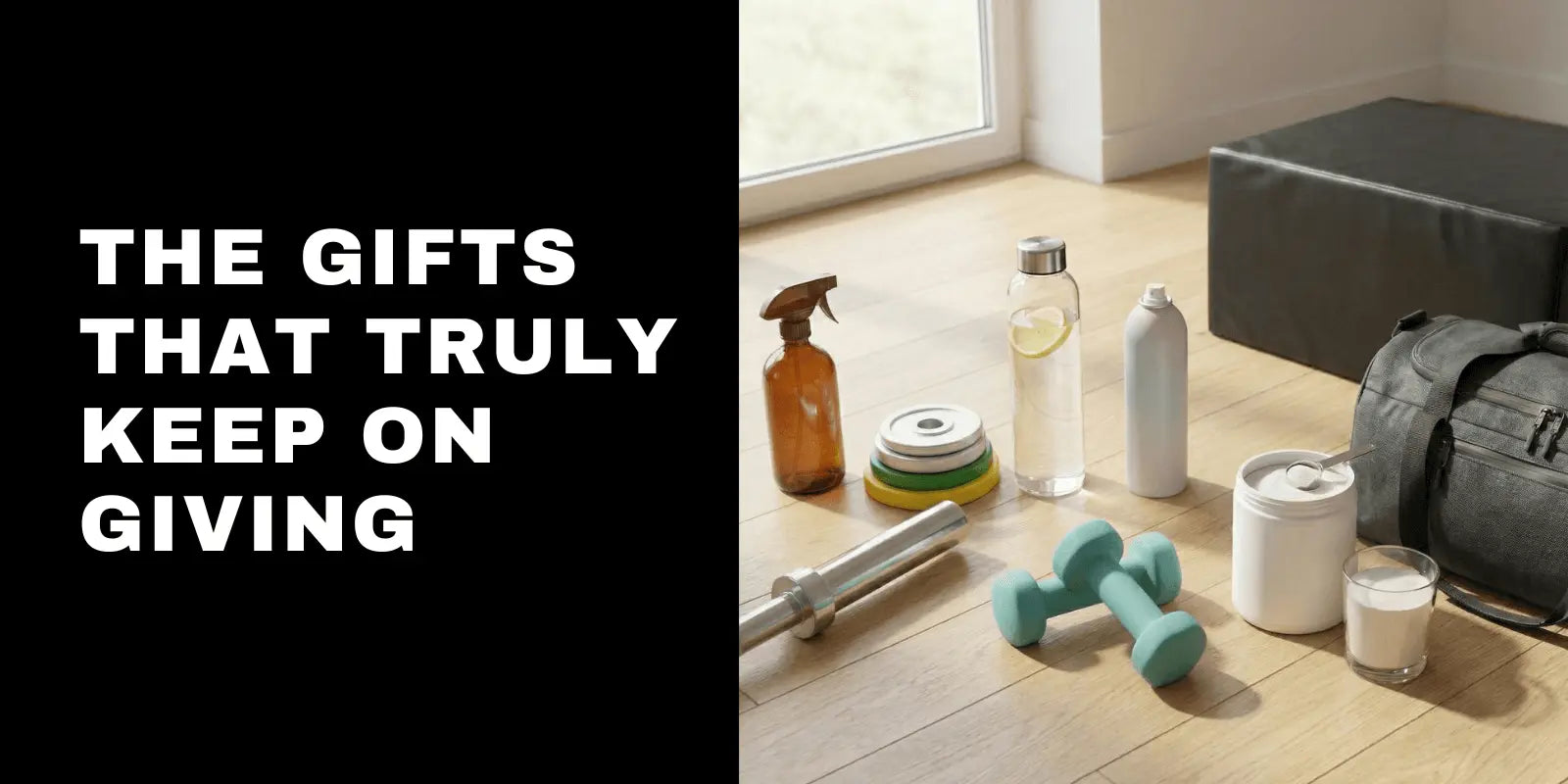Table of Contents
Your strength training routine is not truly complete until you learn how to move a barbell explosively from the ground to overhead in one smooth motion. The barbell snatch is a demanding Olympic lift that challenges your strength, mobility, coordination, and courage all at once. It looks complex, but broken into clear steps, it becomes a skill you can build over time.
From a strength coach and sports medicine perspective, the snatch is worth the effort because it trains nearly every major muscle group and builds athletic qualities you can use in sports and everyday life. This guide walks you through safe technique, key muscles worked, benefits, common mistakes, variations, and alternatives so you can approach the bar with confidence.
What is the Barbell Snatch
The barbell snatch is an advanced Olympic weightlifting movement where you lift a loaded barbell from the floor to a locked-out overhead position in one continuous, powerful motion. You drive the bar up using your legs and hips, then quickly drop under it to catch it overhead in a squat before standing tall.
A solid snatch demands timing, speed, mobility, and full body strength rather than just brute force. When done correctly, the bar travels close to your body on a smooth, mostly vertical path, and your shoulders, core, hips, and legs all work together to stabilize the weight overhead.
Proper Barbell Snatch Form and Technique
Because the snatch is both technical and heavy on the nervous system, beginners should learn under the eye of an experienced coach whenever possible. Start with a light bar or PVC pipe, and only add weight once your positions are consistent and pain free. Below is a simple 5 step breakdown that matches how many coaches teach the lift.
Step 1- Get Ready.
Set the bar on the floor so it is roughly over the midfoot, close to your shins. Stand with your feet about hip to shoulder width apart, toes slightly turned out. Grip the bar with a wide snatch grip so that, when you stand up, the bar would sit roughly in the crease of your hips.
Drop your hips until they are slightly above your knees, with your chest lifted and your shoulders directly over or just in front of the bar. Brace your core as if preparing to be lightly punched in the stomach and pull your shoulder blades down toward your back pockets to engage your lats. You should feel pressure through your whole foot, not only your toes or heels. This is your starting position.
Step 2- Pull The Bar Up.
Begin the lift by pushing the floor away with your legs, not by yanking with your arms. Keep your back angle relatively constant as the bar travels from the floor to just below your knees, and let your knees move back slightly so the bar can stay close to your shins and thighs.
Once the bar passes your knees, continue to extend your hips and knees together so that you are driving powerfully upward. Think about standing up fast and keeping the bar close to your body, brushing your thighs rather than swinging the bar out in front of you. Your weight should stay balanced over the midfoot throughout this first pull.
Step 3- Turn Over The Bar.
As the bar reaches mid thigh or the crease of your hips, violently extend your hips, knees, and ankles in a powerful jump. At the same time, shrug your shoulders straight up and allow your elbows to bend only after your legs and hips have finished driving. This second pull is where most of the speed and height on the bar are created.
When the bar is moving up quickly, you will immediately begin to pull your body down under the bar. Think of pulling yourself under the bar rather than pulling the bar higher. Your elbows move up and out, then you rotate your arms so your elbows punch under and your hands rotate the bar into an overhead position.
Step 4- Dropping and Catching The Bar Over Your Head.
As you move under the bar, quickly drive your feet into their squat stance if they were narrower in the start, and drop into a squat while pushing the bar straight up to a locked overhead position. Aim to receive the bar over the back of your head with your biceps close to your ears, not drifting out in front of you.
Keep your chest lifted, core braced, and eyes forward. Your shoulders should be active, pressing up into the bar, and your elbows locked. If you are new to the movement, practice the catch with an empty bar or PVC pipe first so you can get comfortable sitting in an overhead squat before adding load.
Step 5- Reaching and Standing Up.
Once you have caught the bar in a stable overhead squat, take a breath, brace your core again, and drive through your whole foot to stand up. Keep the bar fixed directly over the middle of your body as you rise, avoiding letting it drift forward or backward.
Finish the rep by standing tall with knees, hips, and elbows fully extended, the bar stacked over your shoulders, hips, and ankles in a straight line. Then lower the bar safely under control, or drop it to a safe lifting platform if your training environment allows it. Rushing through this final phase often leads to wobbles and near misses, so move with control, not panic.
Barbell Snatch Common Mistakes to Avoid
Because so many joints and muscles are involved, small technical errors can quickly add up. While good snatch technique feels surprisingly smooth, poor positions turn the bar into a fight every single rep. Below are three common mistakes and how to fix them.
Cutting Your Pull Short
Dropping into the squat before you finish extending your hips and knees is one of the most common snatch errors. If you dive under the bar too early, you lose valuable upward momentum and end up catching the bar lower than necessary or missing it in front.
Focus on fully extending your hips, knees, and ankles before you commit to getting under the bar. A useful cue is to think “stand tall, then pull under” instead of “rush under the bar.” Filming your lifts from the side can help you see whether you are reaching full extension or cutting the pull short.
Lifting Off with Your Arms
Another common problem is trying to muscle the bar up with your arms instead of driving with your legs and hips. When your arms pull too early or too hard, the bar path becomes loopy and slow, and your shoulders fatigue long before your powerful lower body does.
Imagine your arms as straps connecting your body to the bar during the first part of the lift. Let the legs and hips generate speed first, then allow a quick elbow bend and turnover only after the bar is already moving upward. A good cue is “legs and hips first, arms last.”
Hyperextended Lower Back
Some lifters respond to coaching cues about “chest up” by excessively arching their lower back. This hyperextended position can overload the lumbar spine and cause low back discomfort or injury over time, especially when combined with heavy loads and fatigue.
Instead, aim for a neutral spine by gently bracing your core and thinking “ribs down” while you lift your chest. If you feel pressure in your low back rather than in your hips and legs, reduce the load and have a coach check your positions before continuing.
No matter your experience level, always perform a thorough warm up before attempting heavy snatches. Prepare your shoulders, hips, and ankles with mobility drills, then practice several sets with a dowel or empty bar to reinforce good positions.
Barbell Snatch Muscles Worked
The barbell snatch is a full body, power oriented movement. It trains nearly every major muscle group in a coordinated way rather than isolating just one region. Here are some of the key players that work hardest during the lift.
Quadriceps
Your quadriceps, on the front of your thighs, are heavily involved in driving the bar off the floor and standing up from the catch. They help extend the knee, support the hip, and keep your legs stable as you absorb and redirect force. Strong quads are essential both for powerful snatches and for everyday tasks like climbing stairs or getting up from a low chair.
Deltoids
The deltoids, the rounded muscles on top of your shoulders, help raise and stabilize your arms during the turnover and catch. While the snatch is primarily a leg and hip driven lift, your deltoids play a key supporting role in keeping the bar centered over your base of support in the overhead position.
Trapezius
Your trapezius muscles form a large diamond shaped sheet of muscle across your upper back. In the snatch, they help shrug the bar during the second pull and stabilize your neck and upper back while you receive the bar overhead. Well trained traps contribute to a stronger, more resilient upper back and better posture.
Glutes
The glutes are the powerhouse of the snatch. They extend the hips during the explosive second pull and help control your descent and ascent in the overhead squat. Because they are working throughout almost the entire movement, the snatch is a highly efficient way to build hip strength and power that carries over to sprinting, jumping, and heavy squats.
Benefits of the Barbell Snatch
The snatch is more than just a flashy gym lift. When programmed and performed correctly, it delivers a unique combination of power, coordination, mobility, and core stability that few other exercises can match.
Better Weightlifting Performance
The snatch is one of the two classic competition lifts in Olympic weightlifting, so improving it directly boosts your performance in that sport. Even if you never compete, the speed, timing, and leg drive you develop from snatch training carry over to other barbell lifts like squats, pulls, and presses. Many athletes also find that practicing the snatch sharpens their overall body awareness under a loaded bar.
Enhanced Core Stability
In the catch position, your core must work hard to keep your spine stable while your arms support the bar overhead and your hips sit in a deep squat. This demands coordinated strength from your abdominals, obliques, spinal erectors, and deep stabilizers. Over time, this can improve your ability to transfer force between your upper and lower body and may reduce your risk of certain overuse injuries when combined with good technique and appropriate loading.
Improved Balance and Posture
Successfully catching and standing up with a snatch requires excellent balance from your feet all the way up to your shoulders. Practicing this movement teaches you to keep the bar over your midfoot, maintain a tall chest, and retract your shoulder blades, all of which support better posture. Many lifters notice that regular snatch work helps them feel more stable overhead and more upright during everyday activities.
Barbell Snatch Variations
You do not have to perform the full squat snatch all the time to benefit from this movement pattern. Variations allow you to focus on specific phases of the lift, manage mobility limitations, or progress gradually from simpler to more complex versions.
Barbell Power Snatch
In the barbell power snatch, you start from the floor with the same wide grip and strong setup as the full snatch. You drive the bar upward with your legs and hips, but instead of catching it in a deep squat, you receive it in a partial squat with your thighs above parallel.
Because you do not travel as low, the power snatch can be easier on the hips and ankles and is often used early in a learning progression. It also emphasizes explosive power and speed under the bar.
Barbell Hang Snatch
The barbell hang snatch begins from a standing position with the bar held at your thighs rather than on the floor. From there, you lower the bar to just above or just below the knees, hinge at the hips while keeping your back flat, and then drive explosively upward into the full snatch.
This variation shortens the range of motion and focuses on the transition and second pull. It is useful for athletes who struggle to keep the bar close from the knee to the hip or who are not yet comfortable starting the lift from the floor.
Snatch Grip Barbell Shrugs
Snatch grip barbell shrugs use the same wide grip as the snatch but isolate the powerful shrugging action of the traps and upper back. From a standing position with the bar at your thighs, you keep your arms straight and explosively shrug your shoulders up toward your ears while maintaining balance over your midfoot.
This accessory lift helps reinforce an aggressive upper back drive during the second pull and builds trap strength without the full technical demands of the complete lift.
Barbell Snatch Grip Deadlift
The snatch grip deadlift looks like a conventional deadlift but uses the wide snatch grip and a posture similar to your snatch starting position. You lift the bar from the floor to a standing position while keeping it close to your shins and thighs, focusing on pushing through your legs and engaging your lats.
This variation strengthens the posterior chain, especially the glutes, hamstrings, and upper back, and helps groove the correct bar path and body angles for the first pull of the snatch.
Barbell Snatch Alternatives
If you are not ready for the full snatch or have limitations that make it uncomfortable, you can still build many of the same qualities with related exercises. These alternatives reduce the technical complexity while keeping the emphasis on overhead stability and powerful hip drive.
Paused Overhead Squats
The paused overhead squat starts with the bar pressed or snatched to an overhead position, then you descend into a controlled squat and hold the bottom for 3 to 5 seconds before standing up. Throughout the rep, your elbows stay locked and the bar remains directly over your midfoot.
This exercise is excellent for building shoulder stability, core strength, and mobility in the hips and ankles. It also teaches you to feel comfortable and balanced in the same receiving position you will use for the snatch, but without the speed and complexity of the full lift.
Snatch Grip Push Press
In the snatch grip push press, you hold the bar on your upper back with a wide snatch grip, dip your knees slightly, then drive the bar overhead using a powerful leg drive followed by a strong press. Your elbows lock out at the top, and you maintain a stable overhead position before lowering the bar back to your shoulders.
This variation strengthens the shoulders and triceps while reinforcing the wide grip and overhead stability required in the snatch. It is a good choice on days when you want to train the upper body more heavily or when you are not practicing the full lift.
Barbell Snatch Safety and Precautions
The barbell snatch is an advanced movement and is not appropriate for every lifter at every stage of training. Respect the learning process and prioritize joint health and technique over the amount of weight on the bar. Consider the following precautions before adding snatches to your program.
- If you have a history of significant shoulder, hip, knee, or lower back injuries, consult with a qualified medical professional or physical therapist before training the snatch. Limited shoulder mobility, in particular, can make the overhead position risky if you force it under heavy load.
- Always perform a thorough warm up that includes general cardio, dynamic mobility for the shoulders and hips, and several sets of technique work with a dowel or empty bar. The snatch recruits many muscle groups at once, so starting cold dramatically increases your injury risk.
- Use belts, straps, and other supportive equipment only when needed and when you understand how to use them correctly. They can be helpful tools in certain contexts but should not be a substitute for good technique, appropriate load selection, and progressive training.
Barbell Snatch FAQs
Who should do the barbell snatch?
The snatch is best suited for lifters who already have a solid base of strength with movements like the deadlift, squat, and overhead press, and who can comfortably hold a bar overhead with straight arms. It is especially valuable for Olympic weightlifters, CrossFit athletes, field and court sport athletes, and experienced recreational lifters training under qualified supervision.
Barbell Snatch sets and reps recommendations?
Because the snatch is highly technical, most lifters do best with lower rep sets such as 2 to 5 reps, focusing on quality rather than fatigue. Beginners can start with 3 to 5 sets of very light snatches or snatch variations, while more experienced lifters may perform multiple waves of 2 to 3 reps at moderate to heavy loads. Stop a set if your form breaks down, even if you have reps left in the plan.
How to program the Barbell Snatch?
Place snatches early in your workout, after your warm up but before heavy strength work, when your nervous system is fresh. Start with lighter technique sets, then progress to your main working sets. Most recreational lifters do well training snatch or snatch variations 1 to 3 times per week, depending on their recovery and overall training volume. Combine your snatch work with accessory exercises such as snatch grip deadlifts, overhead squats, and push presses to support long term progress.
Summary
The barbell snatch is a powerful, full body lift that develops strength, speed, coordination, and mobility in a way few other exercises can match. When you learn it step by step, starting light and respecting your current mobility and strength, it becomes a rewarding skill rather than an intimidating stunt.
If you choose to add the snatch to your routine, prioritize excellent technique, gradual progression, and honest feedback from a coach or training partner. Over time, the combination of strong legs, stable shoulders, and a confident overhead position will not only boost your gym performance but may also help you move better and feel more athletic in everyday life.

















